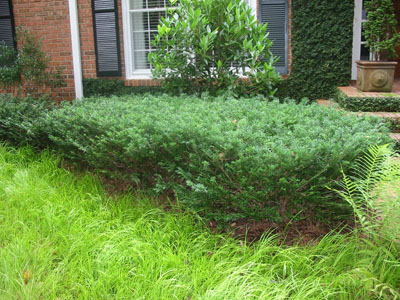Tree Damage – Insurance Claims
You may be able to claim a storm loss or insurance benefit as a result of storm damage. Here are ways to assess the value of damaged trees and landscaping:
• The decrease in the fair market value of the property as a result of the casualty.
• The adjusted basis in the property.
• The amount of insurance or other compensation allowed.
• The cost of replacement (when replacement is possible).
Note: The comments below are general in nature. Consult a CPA or tax advisor before acting on the information.
The decrease in fair market value is calculated two ways: (1) appraisals immediately before and after the casualty and (2) deduction from the before-casualty fair market value less the cost of cleanup, repair or replacement.
Competent loss appraisals by real estate appraisers are the best proof of decrease in fair market value. Appraisal fees are deductible under expenses incurred to determine tax liability. Those fees are not part of the casualty loss.
Cleanup, repair and replacement costs on the damaged landscape may be used to measure the decrease in property value if:
• The repairs are necessary to restore the property to its condition before the casualty.
• The amount spent on repairs is not excessive.
• The replacement or repairs do no more than take care of the damage sustained.
• The value of the property after the repairs does not, as a result of the repairs, exceed the value of the property before the casualty.
Homeowners who sustain significant damage to landscape trees may wish to contact the IRS to determine what other methods are used to evaluate tree value. If homeowners decide to pursue insurance claims or tax deductions, they must prove that casualty loss was sustained because of the storm and that amounts claimed as loss are deductible. Such record-keeping also is important in substantiating any claims for loss recovery.
Specifically, homeowners must be prepared to show:
1. The nature of the casualty and when it occurred.
2. That the loss was the direct result of a sudden and unusual event such as storm, lighting or wind.
3. That the claimant is the owner of the property.
The costs of the property can be proved by purchase contracts, deed, etc.; value before and after the casualty; or the amount of insurance or other compensation received or recoverable.
Photographs of the property before and after the damage help show the condition and value of the property before the casualty. Local newspaper articles, complete with dates and the newspaper’s name, serve as evidence of the casualty and its time and location.
Appraisals are the most desirable tools for establishing values before and after the casualties. Keep receipts for repair and replacement for claims as well as names of witnesses who can help substantiate claims. A CPA, IRS agent or other knowledgeable tax person should be contacted for guidance.













